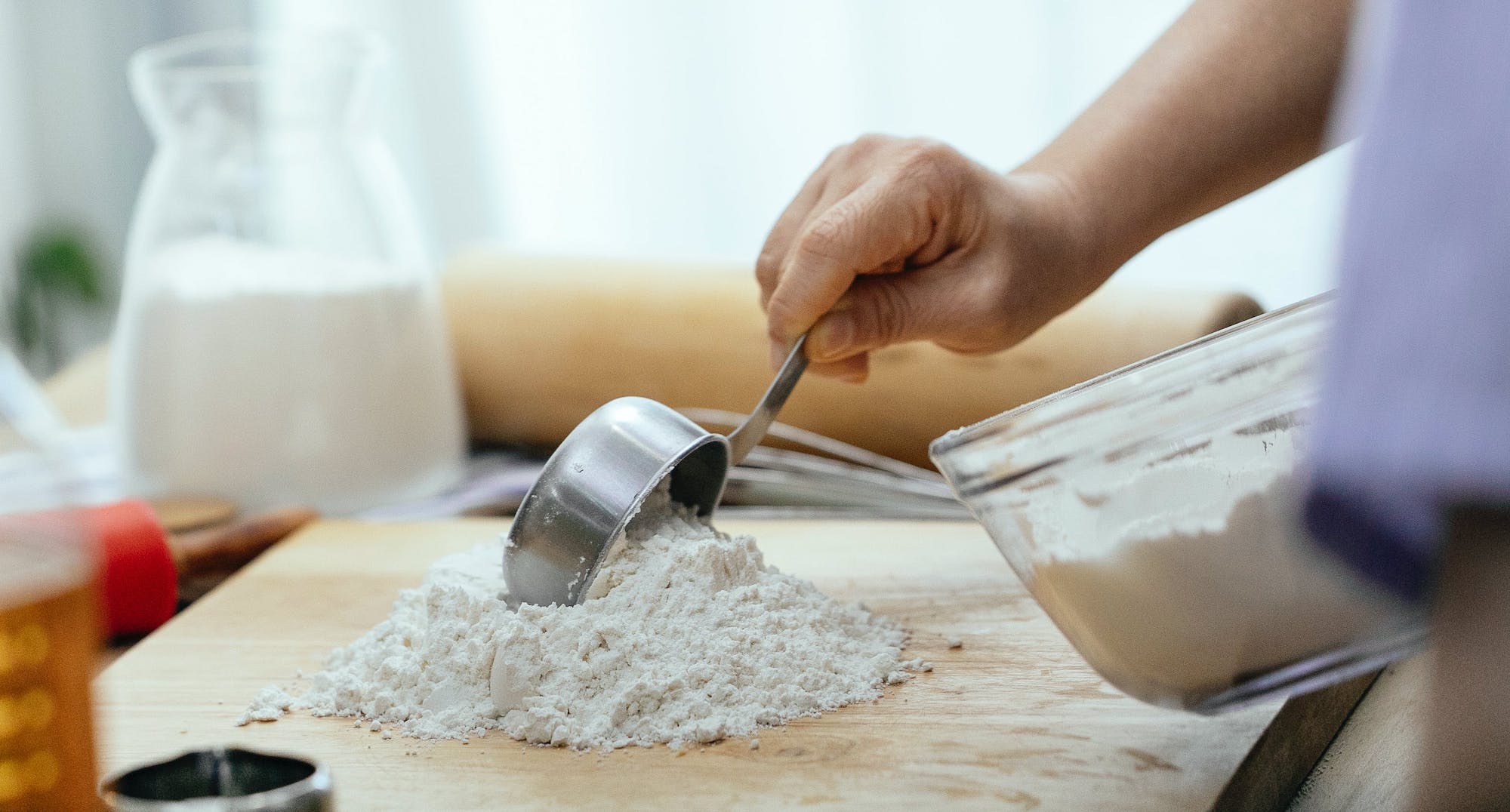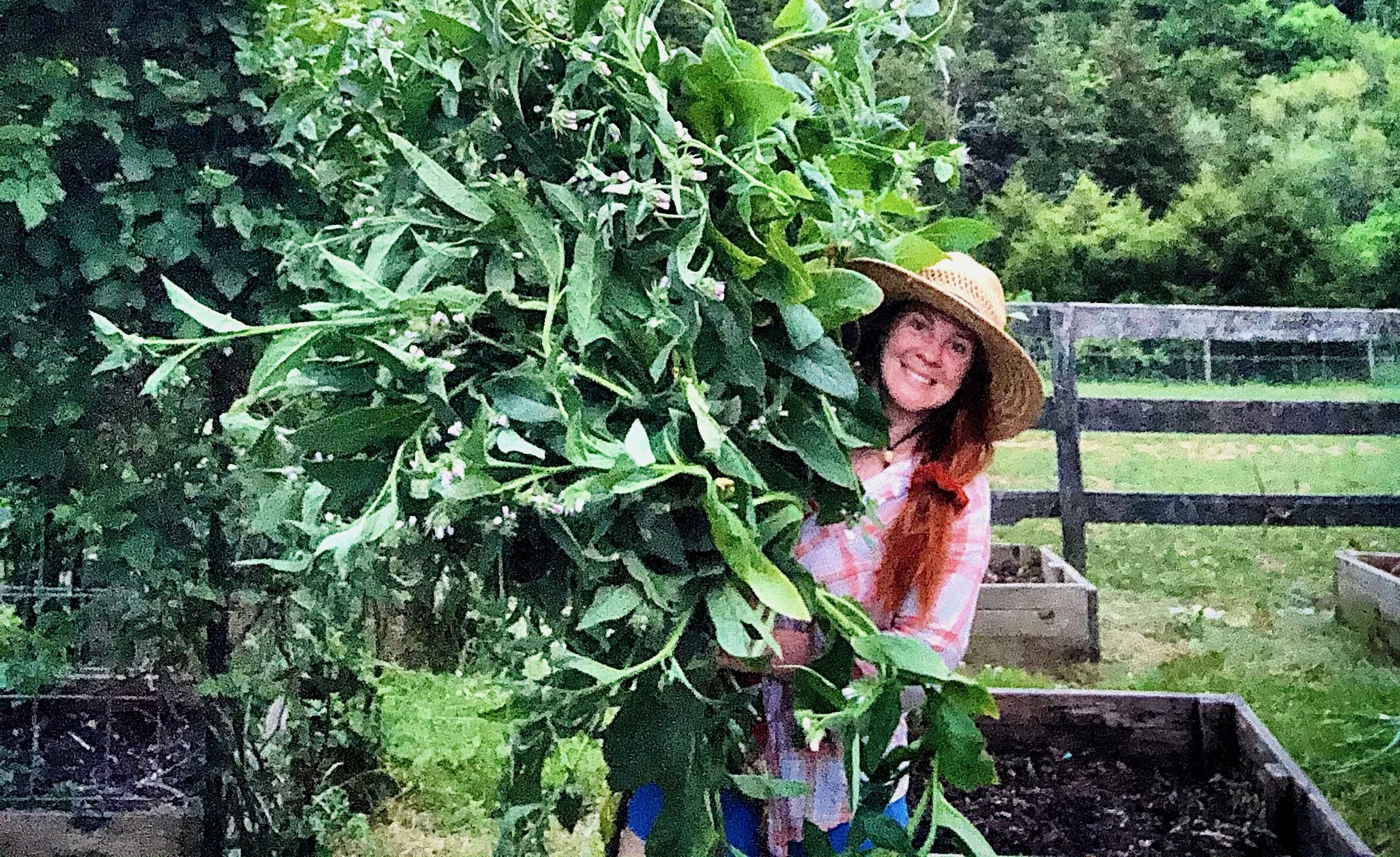We keep our sourdough starter and discard in the fridge. It is my preferred method of keeping a starter. Very easy, provides a long, slow, ferment after feeding, doesn’t require daily maintenance, and saves money on flour. If you see yourself baking daily or more frequently than once a week, you may want to keep your starter on the counter. Regardless, the method for feeding is the same.
Sourdough Starter Tools and Ingredients:
- A digital kitchen scale.
- Unbleached, all-purpose flour
- Filtered water
You cannot make bread without a digital scale. This is a hill I will die on. If you aren’t measuring out ingredients in grams, you are setting yourself up for failure. Another piece of advice, if the recipe doesn’t call for grams, ditch the recipe. There is no way of knowing what 2 cups of flour is like because flour is so different. What type of grain? Is it freshly milled? Oh, the list is endless. Just trust me on this one.
My preferred flour is King Arthur brand. I have tried several other brands and they simply do not compare. I buy the ‘Unbleached All-Purpose Flour’ for feeding my starter, and I buy their ‘Unbleached Bread Flour’ for making bread. If you can find the organic bag that’s even better, but definitely go for unbleached.
Filtered water is non-negotiable. Tap water will kill your starter. Chlorine, fluoride, and other additives in our drinking water will quickly kill off the wild yeast you are trying to promote. The stuff they are legally allowed to add to our water is just gross…
You will always add equal parts water and flour. For 50 grams of starter, I will add 50 grams of filtered water, and 50 grams of all-purpose four.
Steps for feeding:
- Grab your digital scale and set it on a flat surface.
- Press power and then press TARE to zero out your scale.
- Place your bowl or mason jar you are using to mix your starter in, on top of your scale.
- Press Tare again to zero it out. Add your sourdough starter. From week to week, I generally keep 50 grams to feed. If I am going to bake a lot of bread I will feed more.
Whatever remains after measuring out 50 grams from your starter (or your choice of how much starter to feed) will become discard. I keep a half gallon mason jar in the fridge and continually add discard to it and once it fills, I use it for a variety of recipes or to feed the farm animals.
Tare your scale after you have measured your starter so that it goes back to zero. Add in water. Whisk to fully incorporate. A fork works really well or you can use a bakers whisk.
Tare your scale again and add in 50 grams all-purpose flour. Whisk again to incorporate.
Your sourdough starter is now fed! If I am simply feeding my starter to keep it healthy, I will immediately place back in the fridge. I take it out every five days to feed it. If I am going to bake bread with it, I will do this first thing in the morning, leave out on the kitchen counter, and by the evening my starter will be ready to use for my bread recipe. Do not place a lid on it. I prefer throwing a tea towel over mine to allow access to air and to wild yeast.
A couple tips to know your starter is ready for use:
You can place a rubber band around a mason jar to mark where the sourdough starter is when you fed it. Roughly 8 to 12 hours later (depending on the temperature of your home) your starter will have doubled in size and be full of bubbles.
Another thing you can do is the float test. Grab a bit of sourdough starter and drop into a bowl of water. If it floats, its ready for use.



